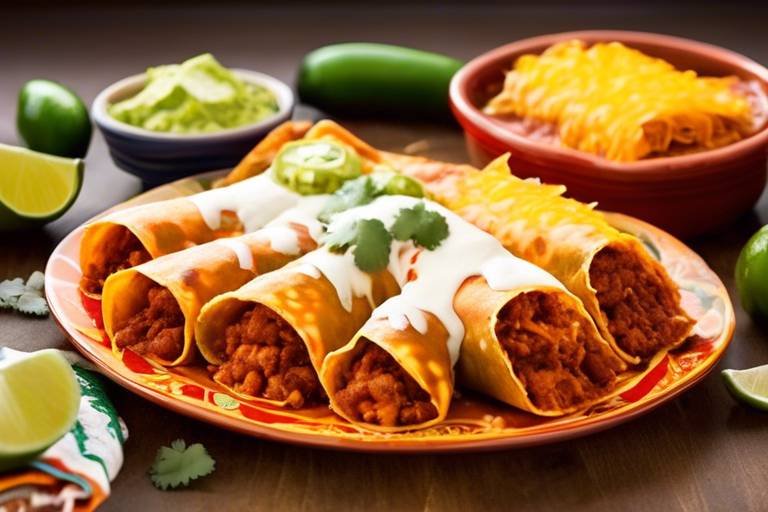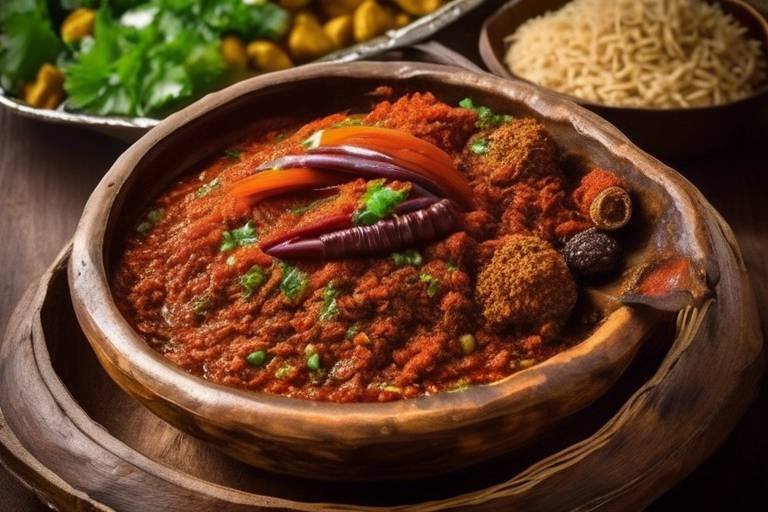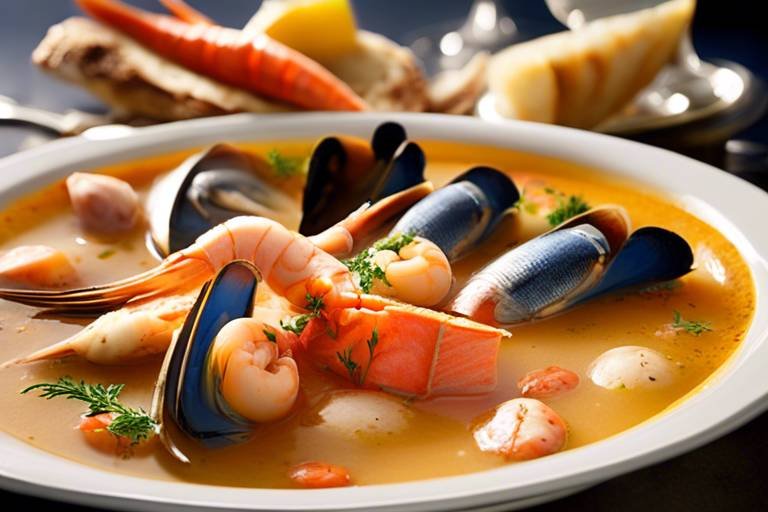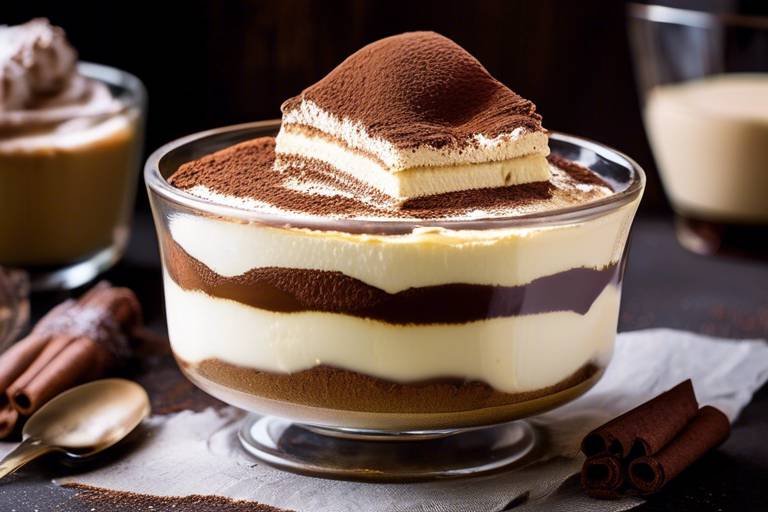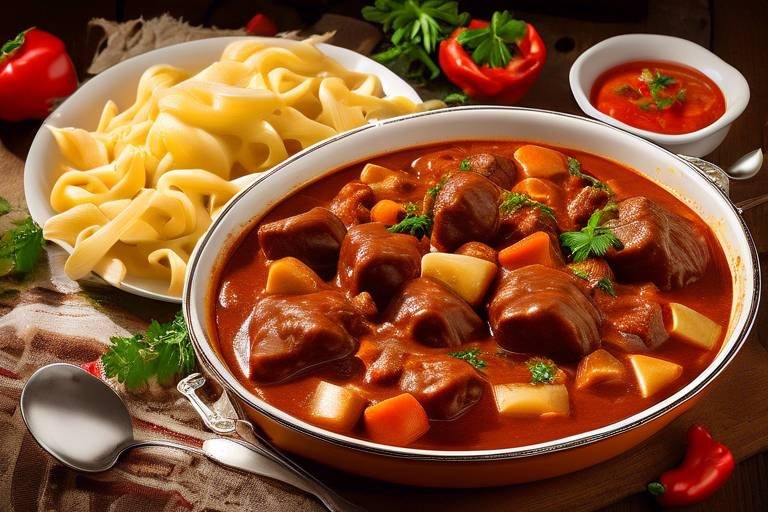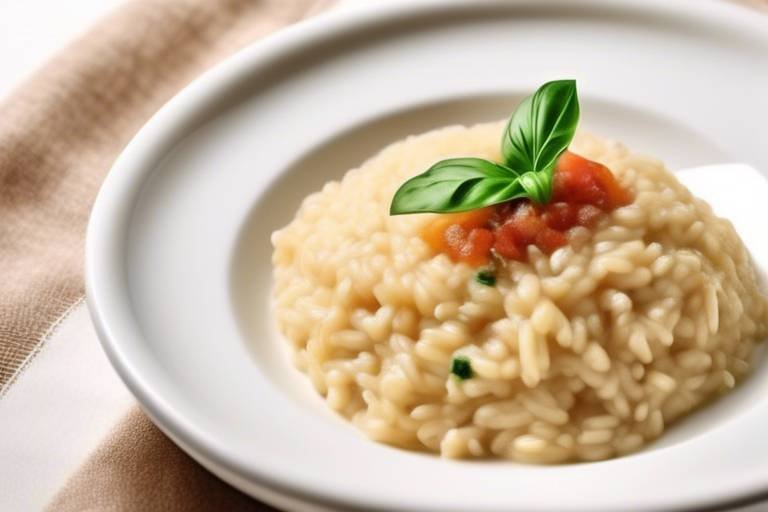The Ultimate Guide to Traditional Mexican Enchiladas
Traditional Mexican enchiladas are more than just a dish; they are a cultural icon that embodies the essence of Mexican cuisine. Originating from centuries-old culinary traditions, enchiladas have evolved into a beloved staple in Mexican households and restaurants alike. From the vibrant colors to the bold flavors, each bite of an enchilada tells a story of Mexico's rich history and diverse culinary heritage.
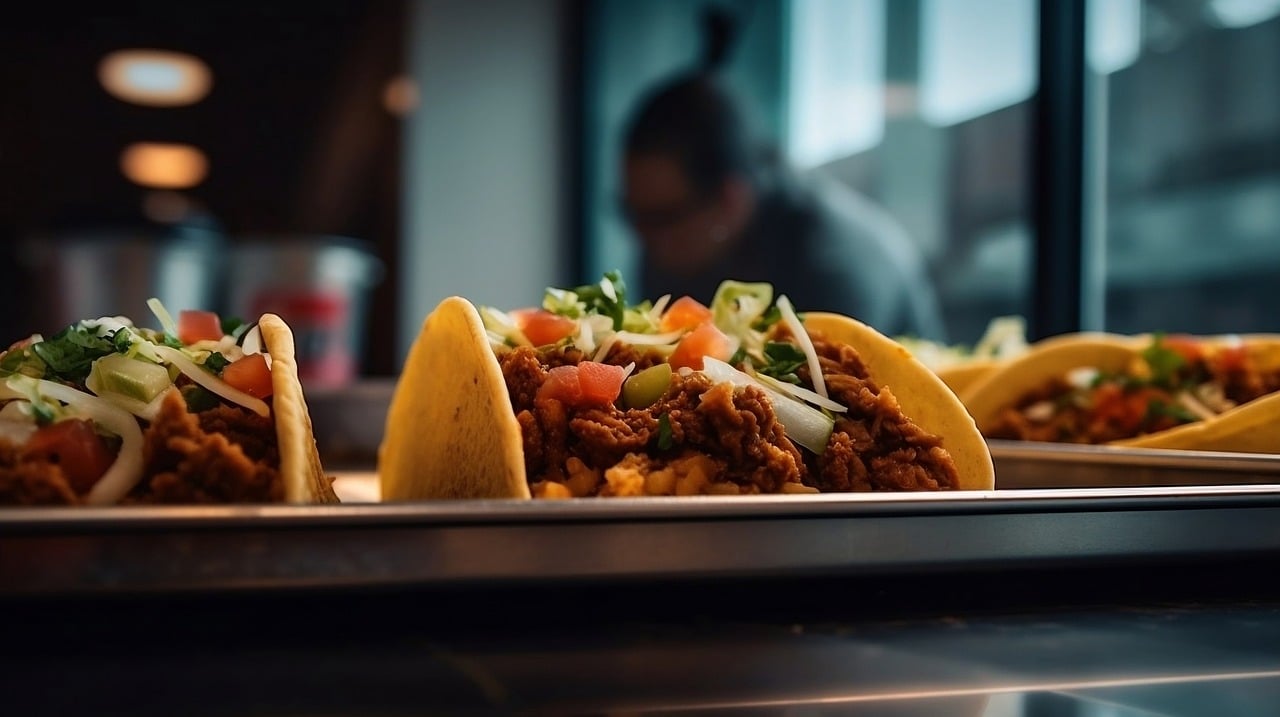
History of Enchiladas in Mexico
Exploring the rich history, diverse varieties, and essential ingredients of traditional Mexican enchiladas, a beloved dish that represents the heart and soul of Mexican cuisine.
The history of enchiladas in Mexico traces back to ancient Mayan and Aztec civilizations, where corn tortillas were filled with various ingredients and rolled up. The word "enchilada" itself comes from the Spanish verb "enchilar," meaning "to season with chili." Initially, enchiladas were a simple peasant food, but over time, they gained popularity and became a staple in Mexican households and restaurants.
As Spanish conquistadors introduced new ingredients like cheese, beef, and pork to Mexico, enchiladas evolved to incorporate these elements, leading to the creation of diverse regional variations. Each region in Mexico developed its unique twist on enchiladas, reflecting local flavors and traditions.
Today, enchiladas are not just a dish but a symbol of Mexican culinary heritage, blending indigenous and Spanish influences to create a flavorful and comforting meal enjoyed by people worldwide.
Explore the different types of enchiladas found across Mexico, from the classic red enchiladas to the regional variations like verde, suiza, and mole enchiladas.
Learn about the key ingredients that give traditional Mexican enchiladas their distinct flavors, including corn tortillas, chili peppers, cheeses, and various fillings.
Get insights into the traditional methods and techniques used to prepare and assemble authentic Mexican enchiladas, from making the sauce to stuffing and rolling the tortillas.
Discover the art of serving and garnishing enchiladas, including popular accompaniments like Mexican rice, refried beans, salsa, guacamole, and fresh toppings like cilantro and onions.
Explore the cultural significance of enchiladas in Mexican celebrations, festivals, and everyday meals, reflecting the country's vibrant culinary heritage and traditions.
Dive into the diverse regional variations of enchiladas found in different parts of Mexico, each showcasing unique flavors, ingredients, and cooking styles.
Learn about contemporary interpretations of traditional Mexican enchiladas, including fusion dishes that blend Mexican flavors with international cuisines, offering a creative twist on a classic favorite.
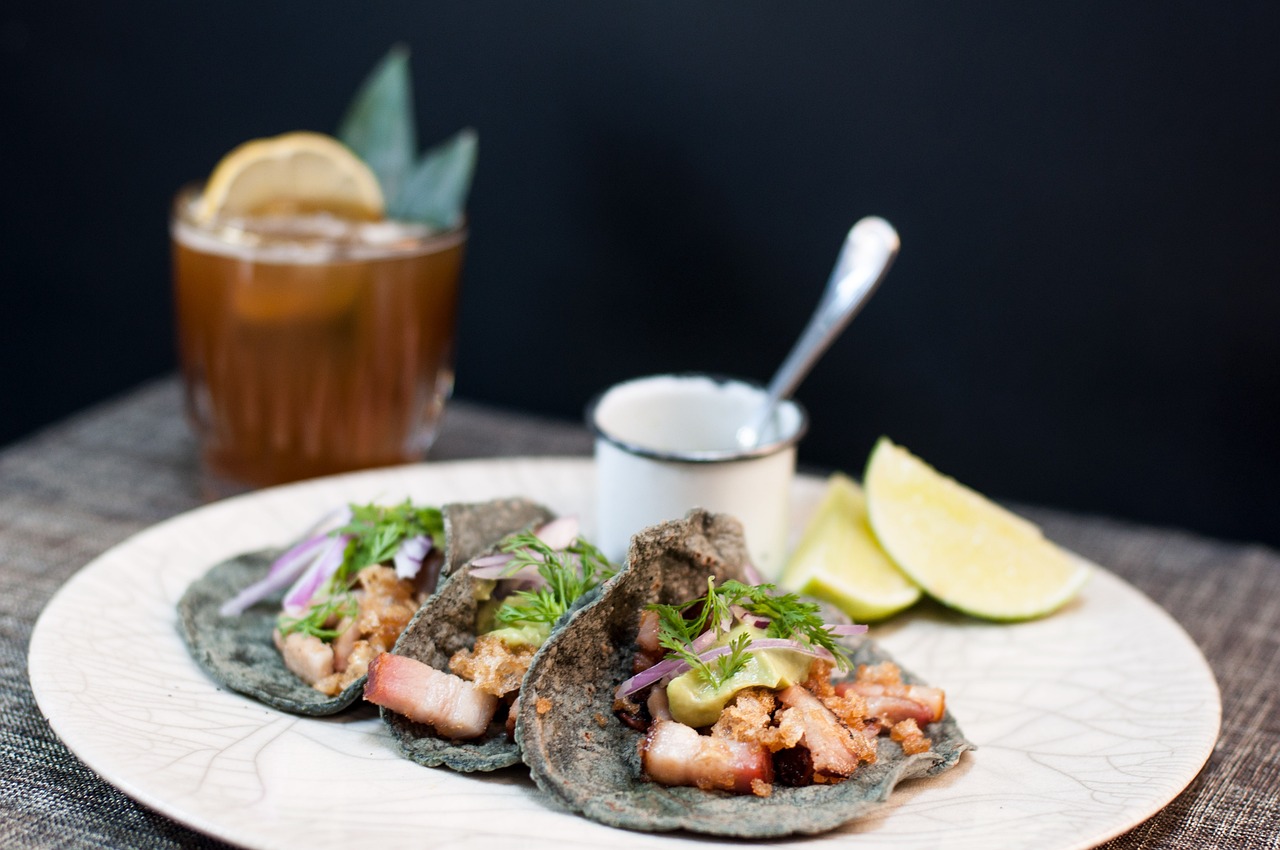
Types of Enchiladas
When it comes to traditional Mexican cuisine, enchiladas stand out as a beloved and iconic dish that embodies the essence of Mexican flavors and culinary traditions. There are various types of enchiladas found across Mexico, each offering a unique taste and experience for food enthusiasts to savor.
One of the most popular types of enchiladas is the classic red enchiladas, known for their rich and flavorful red chili sauce that envelops the rolled tortillas. These enchiladas are a staple in Mexican households and are often served with a variety of fillings, such as shredded chicken, beef, or cheese.
For those looking to explore regional variations, verde enchiladas are a refreshing option that features a vibrant green sauce made from tomatillos and green chili peppers. The tangy and slightly spicy flavor of the verde sauce pairs perfectly with fillings like pork, beans, or vegetables.
Another regional favorite is suiza enchiladas, which are topped with a creamy white sauce made from sour cream and cheese, reminiscent of Swiss cuisine. These enchiladas are typically filled with chicken and are baked to perfection, creating a comforting and indulgent dish.
For those craving a more complex and indulgent flavor profile, mole enchiladas are a must-try. Mole sauce, a rich and flavorful concoction made from a blend of chili peppers, chocolate, nuts, and spices, adds a depth of flavor to the enchiladas that is truly unique and satisfying.
Whether you prefer the classic red enchiladas, the refreshing verde variation, the creamy suiza style, or the indulgent mole creation, there is a type of enchilada to suit every palate and preference. Each type offers a delicious journey through the diverse and vibrant world of Mexican cuisine.
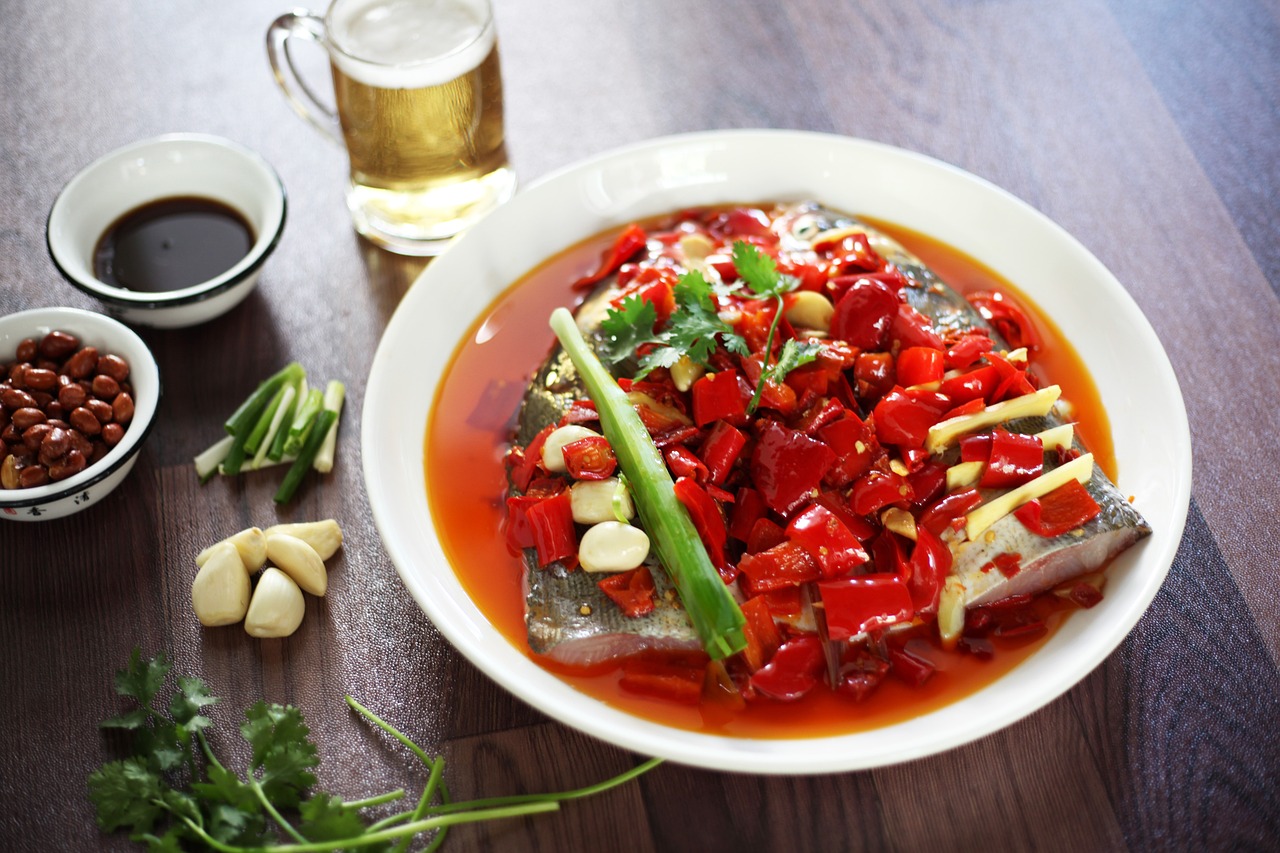
Essential Ingredients
Exploring the rich history, diverse varieties, and essential ingredients of traditional Mexican enchiladas, a beloved dish that represents the heart and soul of Mexican cuisine.
Discover the origins of enchiladas in Mexican culinary traditions and how they have evolved over time to become a staple in Mexican households and restaurants.
Explore the different types of enchiladas found across Mexico, from the classic red enchiladas to the regional variations like verde, suiza, and mole enchiladas.
When it comes to traditional Mexican enchiladas, several essential ingredients come together to create the distinct and flavorful dish. Corn tortillas are a fundamental component, providing the base for the enchiladas. These tortillas are typically dipped in a chili pepper sauce, such as a rich red sauce made from dried chilies or a vibrant green sauce made with tomatillos and green chilies. Cheeses like queso fresco or Oaxaca cheese are often used to add a creamy and savory element to the dish. As for fillings, options vary widely from shredded chicken or beef to vegetables like potatoes or beans, allowing for endless customization based on personal preferences.
Get insights into the traditional methods and techniques used to prepare and assemble authentic Mexican enchiladas, from making the sauce to stuffing and rolling the tortillas.
Discover the art of serving and garnishing enchiladas, including popular accompaniments like Mexican rice, refried beans, salsa, guacamole, and fresh toppings like cilantro and onions.
Explore the cultural significance of enchiladas in Mexican celebrations, festivals, and everyday meals, reflecting the country's vibrant culinary heritage and traditions.
Dive into the diverse regional variations of enchiladas found in different parts of Mexico, each showcasing unique flavors, ingredients, and cooking styles.
Learn about contemporary interpretations of traditional Mexican enchiladas, including fusion dishes that blend Mexican flavors with international cuisines, offering a creative twist on a classic favorite.
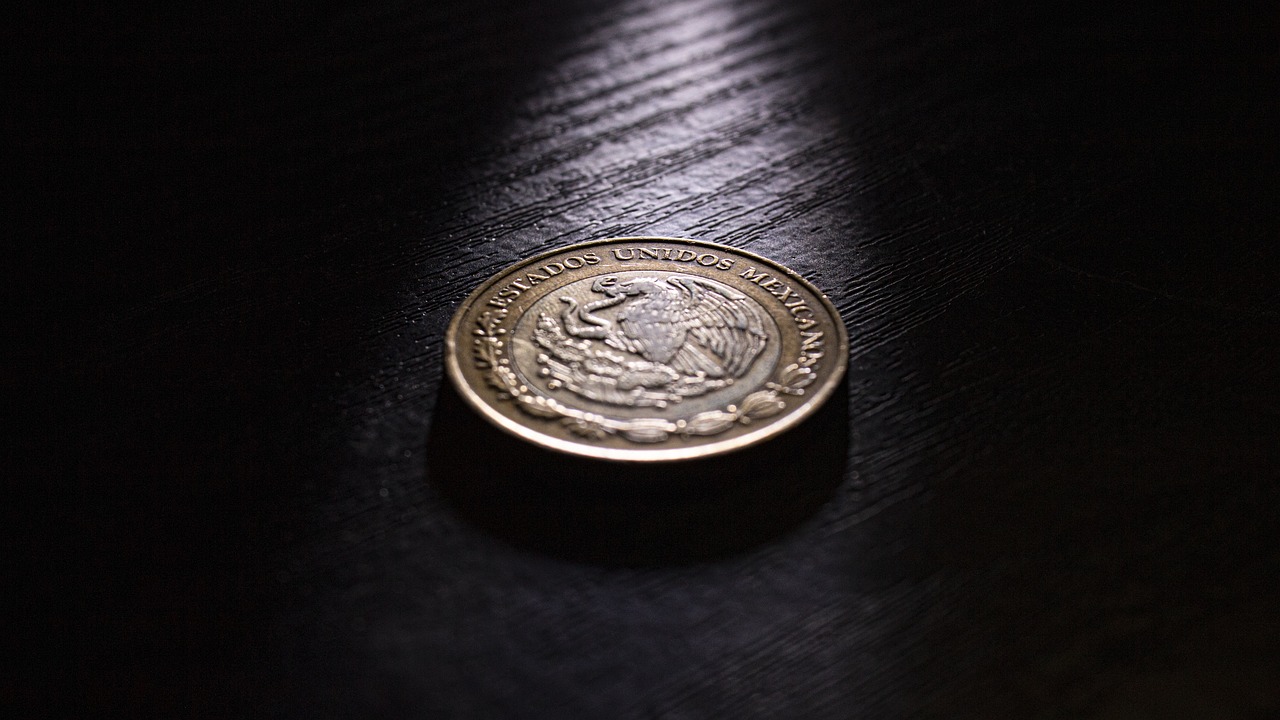
Preparation Techniques
Exploring the rich history, diverse varieties, and essential ingredients of traditional Mexican enchiladas, a beloved dish that represents the heart and soul of Mexican cuisine.
When it comes to preparing traditional Mexican enchiladas, the process is a labor of love that involves several key steps to ensure an authentic and flavorful dish. One of the crucial elements in making enchiladas is creating a rich and flavorful sauce that will coat and enhance the flavors of the dish. This sauce is typically made by blending various chili peppers, tomatoes, onions, garlic, and spices to achieve a perfect balance of heat and depth of flavor.
After preparing the sauce, the next step is to assemble the enchiladas. This involves lightly frying corn tortillas in oil to make them pliable, then dipping each tortilla in the prepared sauce to coat it completely. The tortillas are then filled with a savory mixture of ingredients such as shredded chicken, beef, cheese, or beans, and rolled up tightly to create the classic enchilada shape.
Once the enchiladas are assembled, they are placed in a baking dish and topped with any remaining sauce and a generous amount of shredded cheese. The dish is then baked in the oven until the cheese is melted and bubbly, and the enchiladas are heated through. This final step ensures that the flavors meld together beautifully, creating a mouthwatering and satisfying dish that is sure to please any palate.
Throughout the preparation process, attention to detail and care are essential to ensure that each enchilada is a work of art that captures the essence of traditional Mexican cuisine. From the homemade sauce to the perfectly rolled tortillas, every step plays a crucial role in creating a dish that is both delicious and culturally significant.
If you have any burning questions about traditional Mexican enchiladas, we've got you covered! Here are some common queries that may arise:
- What is the difference between red and green enchiladas?
- How spicy are traditional Mexican enchiladas?
- Can I make enchiladas ahead of time?
- What are some creative filling ideas for enchiladas?
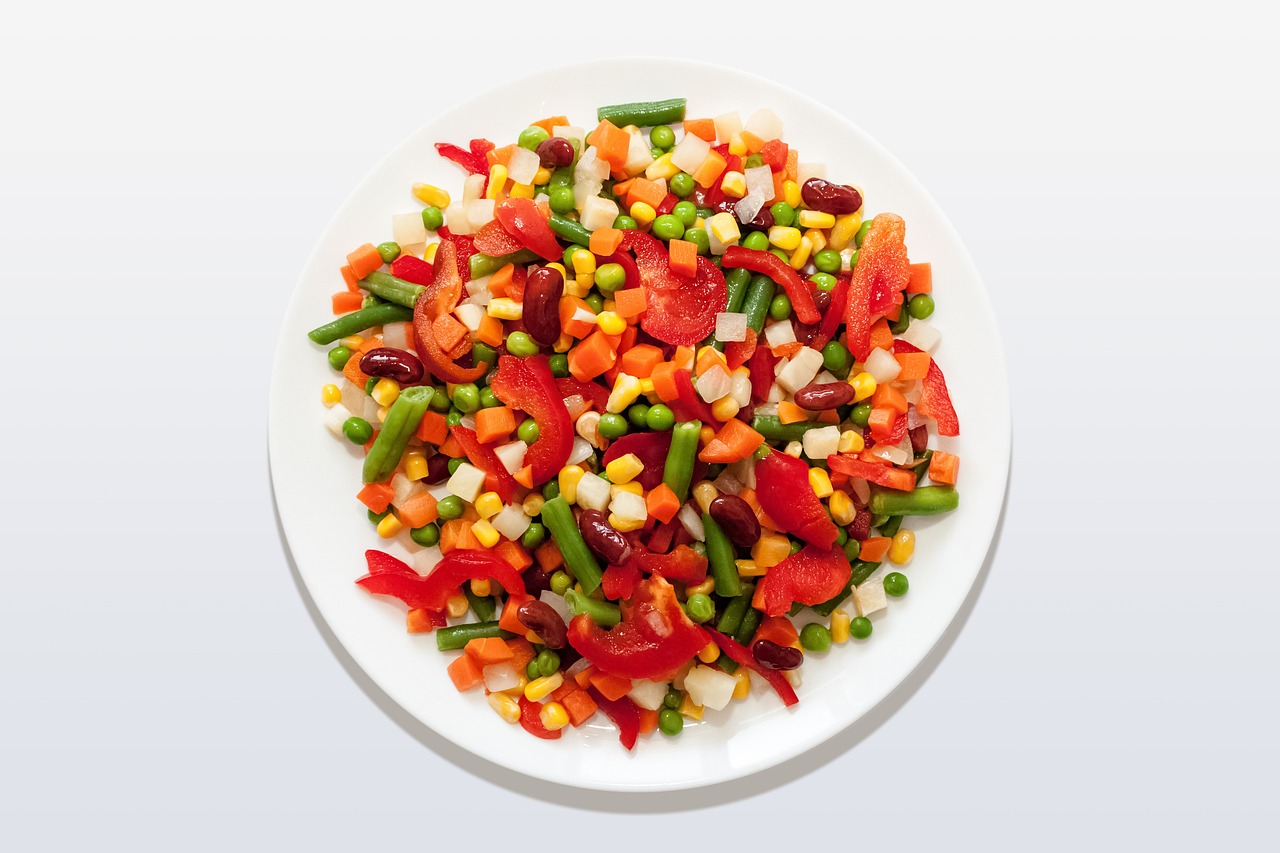
Serving and Garnishing
When it comes to serving and garnishing traditional Mexican enchiladas, the presentation is just as important as the taste. One popular way to serve enchiladas is on a colorful plate, showcasing the vibrant colors of the dish. Garnishing plays a crucial role in enhancing the visual appeal and flavor profile of the enchiladas. Fresh toppings like chopped cilantro, diced onions, and sliced jalapeños not only add a pop of color but also provide a refreshing contrast to the rich and savory flavors of the dish.
In addition to the traditional garnishes, a dollop of sour cream or Mexican crema on top of the enchiladas can add a creamy texture and a touch of tanginess. Salsa, whether red or green, is a staple accompaniment that complements the spiciness of the enchiladas. Guacamole, with its creamy avocado base and zesty lime flavor, is another popular side dish that pairs well with the dish.
When serving enchiladas, it's common to include classic Mexican sides such as Mexican rice and refried beans. The rice, flavored with tomatoes, onions, and garlic, serves as a perfect bed for the enchiladas, soaking up the delicious sauce. Refried beans, cooked with lard or oil and seasoned with spices, add a hearty and comforting element to the meal.
To elevate the dining experience, consider serving enchiladas with a side of fresh lettuce and tomato salad drizzled with a light vinaigrette dressing. This refreshing salad provides a crisp contrast to the warm and flavorful enchiladas, creating a well-rounded and satisfying meal.

Enchiladas in Mexican Culture
When it comes to Mexican culture, enchiladas hold a special place as a culinary delight that embodies the essence of traditional Mexican cuisine. These flavorful rolled tortillas filled with a variety of ingredients symbolize the warmth and richness of Mexican hospitality. Enchiladas are not just a dish; they are a cultural icon that brings families and communities together around the dinner table, creating moments of joy and connection.
The preparation and sharing of enchiladas are deeply ingrained in Mexican culture, often associated with celebrations and gatherings. Whether it's a festive occasion like Dia de los Muertos or a simple family dinner, enchiladas are a staple that brings people closer and fosters a sense of togetherness. The act of making and serving enchiladas is a labor of love, showcasing the care and dedication that goes into creating a dish that nourishes both the body and the soul.
Enchiladas also play a significant role in Mexican culinary traditions, with each region putting its own unique spin on the classic dish. From the spicy red enchiladas of the central regions to the tangy verde enchiladas of the coastal areas, the diversity of flavors and styles reflects the cultural richness and culinary creativity of Mexico. Enchiladas are not just food; they are a reflection of the vibrant tapestry of Mexican regional cuisines.
Moreover, enchiladas are often served during important cultural events, symbolizing heritage and tradition. The colorful presentation of enchiladas, topped with vibrant sauces and garnishes, is a feast for the eyes as well as the palate. Whether enjoyed at a street food stall or a high-end restaurant, enchiladas evoke a sense of pride and nostalgia, reminding Mexicans of their roots and culinary legacy.
In Mexican culture, sharing a plate of enchiladas is more than just a meal; it is a celebration of flavors, history, and community. The communal experience of savoring enchiladas together strengthens bonds and creates lasting memories. With each bite of a delicious enchilada, one can taste the passion and heritage that have been passed down through generations, making it a truly authentic and cherished part of Mexican culture.

Regional Enchilada Variations
When it comes to regional enchilada variations in Mexico, the diversity and creativity are truly remarkable. Each region boasts its own unique twist on this beloved dish, showcasing a culinary tapestry of flavors and ingredients that reflect the local culture and traditions. From the spicy and savory flavors of the Yucatan Peninsula to the rich and complex sauces of Oaxaca, regional enchiladas offer a tantalizing journey for your taste buds.
In Northern Mexico, you'll find enchiladas Norteñas, typically made with flour tortillas and filled with hearty ingredients like beef, potatoes, and cheese. These enchiladas are often topped with a robust red chili sauce and a generous sprinkling of cheese, creating a satisfying and comforting meal that warms the soul.
Traveling to the central regions of Mexico, enchiladas Poblanas reign supreme, featuring a flavorful mole sauce made with a blend of chili peppers, chocolate, and spices. These enchiladas are filled with shredded chicken or pork and topped with sesame seeds, creating a harmonious balance of sweet and savory flavors that dance on your palate.
Heading towards the coast, you'll encounter enchiladas Suizas, a specialty of the Veracruz region. These enchiladas are filled with tender chicken and smothered in a creamy, tangy sauce made with tomatillos and cream. Topped with melted cheese and baked to golden perfection, enchiladas Suizas offer a delightful contrast of textures and flavors that is simply irresistible.
Exploring the southern regions of Mexico, enchiladas Yucatecas take center stage with their bold and vibrant flavors. These enchiladas are filled with tender shredded pork marinated in achiote paste and topped with a fiery habanero salsa. Served with pickled red onions and a side of refried black beans, enchiladas Yucatecas deliver a fiery kick that will awaken your taste buds.
Whether you prefer the hearty and robust flavors of the north or the spicy and exotic tastes of the south, regional enchilada variations in Mexico offer a culinary adventure like no other. Each bite tells a story of tradition, innovation, and the rich tapestry of flavors that define Mexican cuisine.
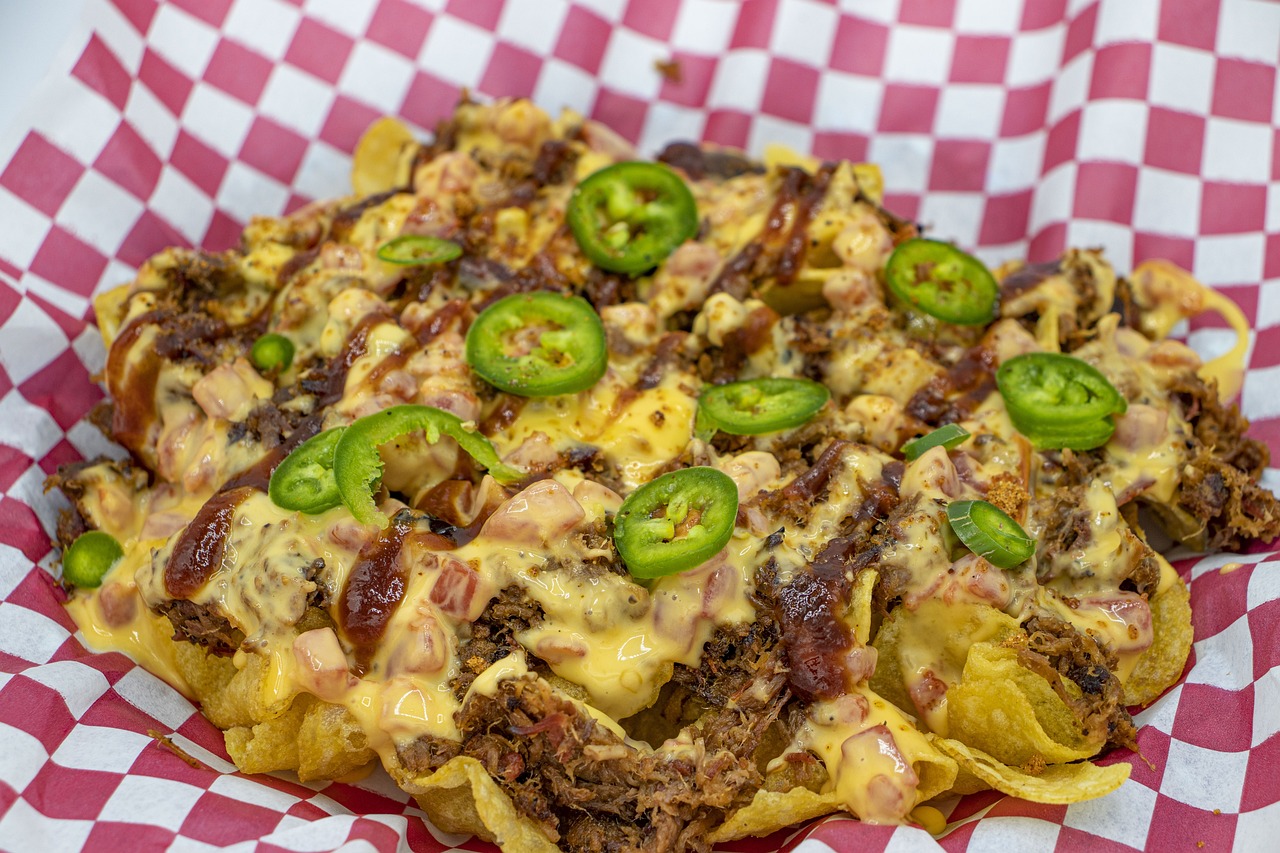
Modern Twists and Fusion Enchiladas
Modern twists and fusion enchiladas offer a delightful blend of traditional Mexican flavors with innovative culinary approaches from around the world. Imagine the explosion of flavors when classic enchiladas meet international influences, creating a symphony of taste that surprises and delights the palate. These fusion creations take the beloved dish to new heights, infusing it with unexpected ingredients and techniques that elevate the dining experience to a whole new level.
One popular modern twist is the incorporation of Asian-inspired flavors, such as teriyaki or soy-infused fillings, adding a savory umami kick to the traditional dish. Picture a fusion enchilada bursting with the sweetness of teriyaki sauce, perfectly complemented by the heat of Mexican chili peppers, creating a harmonious balance of flavors that dance on your taste buds.
Another exciting fusion trend is the marriage of Mexican enchiladas with Mediterranean ingredients like feta cheese, olives, and sun-dried tomatoes. The result is a culinary masterpiece that transports you to the shores of the Mediterranean while still paying homage to the roots of Mexican cuisine. It's a delightful surprise that showcases the versatility and adaptability of enchiladas in the ever-evolving world of gastronomy.
For those craving a touch of luxury, fusion enchiladas may feature gourmet ingredients like truffle oil, lobster, or foie gras, elevating the humble dish to a gourmet experience fit for the most discerning food connoisseurs. These indulgent creations bring a touch of extravagance to the traditional Mexican staple, offering a decadent twist that is sure to leave a lasting impression.
Whether it's a playful fusion of global flavors or a sophisticated reinterpretation of a classic dish, modern twists and fusion enchiladas showcase the boundless creativity and innovation of chefs around the world. With each bite, you embark on a culinary journey that surprises, delights, and ultimately celebrates the rich tapestry of flavors that define the ever-evolving world of food.
Frequently Asked Questions
- What is the origin of enchiladas?
Enchiladas have a rich history in Mexican culinary traditions, with roots dating back to ancient civilizations like the Aztecs and Mayans. Over time, enchiladas have evolved to become a beloved dish that represents the heart and soul of Mexican cuisine.
- What are the different types of enchiladas?
There are various types of enchiladas found across Mexico, including classic red enchiladas, verde enchiladas made with green sauce, suiza enchiladas topped with cream, and mole enchiladas featuring a rich mole sauce.
- What are the essential ingredients in traditional Mexican enchiladas?
Key ingredients in traditional Mexican enchiladas include corn tortillas, chili peppers for the sauce, a variety of cheeses like queso fresco or Oaxaca, and fillings such as chicken, beef, or beans.
- How are authentic Mexican enchiladas prepared?
Authentic Mexican enchiladas are prepared by dipping corn tortillas in sauce, filling them with a savory mixture, rolling them up, and baking them until warm and bubbly. The process involves layering flavors and textures to create a delicious dish.
- What are common accompaniments for serving enchiladas?
Enchiladas are often served with traditional sides like Mexican rice, refried beans, salsa, guacamole, and fresh toppings such as cilantro and onions. These accompaniments complement the flavors of the enchiladas and enhance the overall dining experience.

